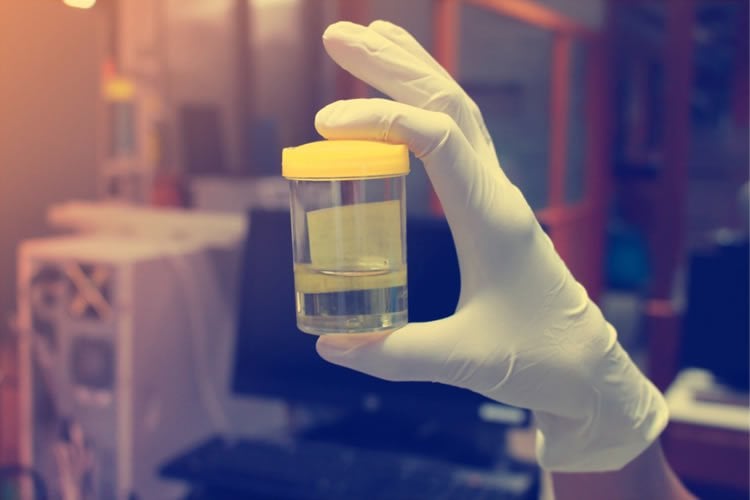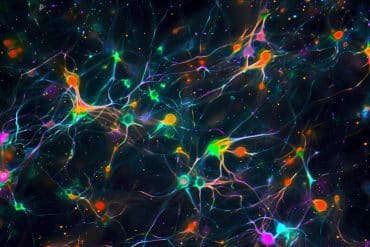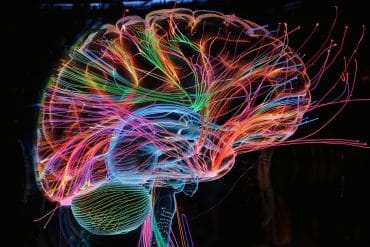Summary: Researchers have developed a new urine test that could potentially measure how much our bodies have aged. The test measures a substance that indicates oxidative damage, which increases in urine as we age.
Source: Frontiers.
Researchers find that a substance indicating oxidative damage increases in urine as people get older. The study, published today in open-access journal in Frontiers in Aging Neuroscience, also describes a way to easily measure levels of this marker in human urine samples. The new marker potentially provides a method to measure how much our body has aged — our biological rather than chronological age. This could help predict our risk of developing age-related disease, and even our risk of death.
While everyone born in the same year has the same chronological age, the bodies of different people age at different rates. This means that, although the risk of many diseases increases with age, the link between our age in years and our health and lifespan is relatively loose. Many people enjoy long lives, relatively free of disease, while others suffer chronic illness and premature death.
So, if our age in years isn’t the most reliable indicator of aging in our bodies, what is?
Some researchers consider normal aging to be a disease, where our cells accumulate damage over time. The rate of this cellular damage can vary from person to person, and may be dictated by genetics, lifestyle and the environment we live in. This cellular damage may be a more accurate indication of our biological age than the number of years since we were born.
Finding a way to measure biological age could help to predict the risk of developing age-related disease and even death. We also need to be able to measure biological age to know whether treatments to slow aging – which may be possible in the future — are effective.
One mechanism thought to underlie biological aging involves a molecule vital to our survival – oxygen – in what is called the free radical theory of aging.
“Oxygen by-products produced during normal metabolism can cause oxidative damage to biomolecules in cells, such as DNA and RNA,” explains Jian-Ping Cai, a researcher involved in the study. “As we age, we suffer increasing oxidative damage, and so the levels of oxidative markers increase in our body.”
One such marker, with the catchy name of 8-oxo-7,8-dihydroguanosine — or 8-oxoGsn for short — results from oxidation of a crucial molecule in our cells called RNA. In previous studies in animals, Cai and colleagues found that 8-oxoGsn levels increase in urine with age.
To see if this is true for humans as well, the researchers measured 8-oxoGsn in urine samples from 1,228 Chinese residents aged 2-90 years old, using a rapid analysis technique called ultra-high-performance liquid chromatography.
“We found an age-dependent increase in urinary 8-oxoGsn in participants 21 years old and older.” said Cai. “Therefore, urinary 8-oxoGsn is promising as a new marker of aging.”

Interestingly, levels of 8-oxoGsn were roughly the same between men and women, except in post-menopausal women, who showed higher levels. This may have been caused by the decrease in estrogen levels that happens during menopause, as estrogen is known to have anti-oxidant effects.
The team’s rapid analysis technique could be useful for large-scale aging studies, as it can process urine samples from up to 10 participants per hour.
“Urinary 8-oxoGsn may reflect the real condition of our bodies better than our chronological age, and may help us to predict the risk of age-related diseases,” concludes Cai.
Source: Conn Hastings – Frontiers
Publisher: Organized by NeuroscienceNews.com.
Image Source: NeuroscienceNews.com image is adapted from the Frontiers news release.
Original Research: Open access research for “Urinary 8-oxo-7,8-dihydroguanosine as a Potential Biomarker of Aging” by Wei Gan, Xin-Le Liu, Ting Yu, Yuan-Gao Zou, Ting-Ting Li, Shuang Wang, Jin Deng, Lan-Lan Wang and Jian-Ping Cai in Frontiers in Aging Neuroscience. Published February 27 2018.
doi:10.3389/fnagi.2018.00034
[cbtabs][cbtab title=”MLA”]Frontiers “Simple Urine Test Could Measure How Much Our Body Has Aged.” NeuroscienceNews. NeuroscienceNews, 4 April 2018.
<https://neurosciencenews.com/urine-test-aging-8725/>.[/cbtab][cbtab title=”APA”]Frontiers (2018, April 4). Simple Urine Test Could Measure How Much Our Body Has Aged. NeuroscienceNews. Retrieved April 4, 2018 from https://neurosciencenews.com/urine-test-aging-8725/[/cbtab][cbtab title=”Chicago”]Frontiers “Simple Urine Test Could Measure How Much Our Body Has Aged.” https://neurosciencenews.com/urine-test-aging-8725/ (accessed April 4, 2018).[/cbtab][/cbtabs]
Abstract
Urinary 8-oxo-7,8-dihydroguanosine as a Potential Biomarker of Aging
Background: A molecular biomarker of physiologic age, as opposed to chronologic age, is needed in clinical medicine. 8-oxo-7,8-dihydro-2′-deoxyguanosine (8-oxodGsn) and 8-oxo-7, 8-dihydroguanosine (8-oxoGsn) are two promising aging biomarkers.
Methods: A total of 1,228 healthy Chinese residents (613 males and 615 females) 2–90 years of age were randomly selected. Spot urine samples were collected, and the concentrations of 8-oxodGsn and 8-oxoGsn were measured using ultra-high-performance liquid chromatography with a triple quadrupole mass spectrometer (UPLC-MS/MS). Method validation, including accuracy, precision, linearity and quantification limit, was performed. The relationship between oxidized guanosine and age/gender was evaluated.
Results: 8-oxodGsn and 8-oxoGsn were eluted at 1.61 and 1.30 min, respectively. The calibration curve was linear in the range of 0.2–500 ng/ml for both analytes. The lowest limit of quantification (LLOQ) was 0.2 ng/ml for 8-oxodGsn and 0.1 ng/ml for 8-oxoGsn. There was an age-dependent increase in the biomarkers from the 21- to 30-year-old group to the 81- to 90-year-old group in both genders. In the subjects older than 61 years of age, the levels of 8-oxodGsn as well as 8-oxoGsn in urine were much higher in females than in males. The content of 8-oxoGsn correlated more closely with age and was higher (approximately 2-fold) than that of 8-oxodGsn for a given individual.
Conclusions: 8-oxodGsn and 8-oxoGsn can be easily measured by UPLC-MS/MS. Urinary 8-oxoGsn may be a potential biomarker to determine a person’s physiologic age and identify individuals at high risk of developing age-associated disease.






